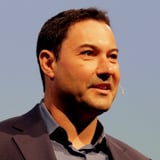Summary
Feel like foresight is best left to economists and business strategists? Think again. Fight your imposter syndrome to harness the power of futures-thinking in your design organization to imagine and pursue preferable futures in how you work, what you produce and even in your personal life. You do not have to stop the world to look, think and act – make the futures mindset a natural habit and make small actions today turn into a better world tomorrow.
Key Insights
-
•
The COVID-19 pandemic exposed global unpreparedness and severely impacted small businesses, with 30% closing in 2020.
-
•
Despite crises, remarkable global progress exists in areas like vaccination coverage, literacy, and environmental protection.
-
•
Futures thinking requires observation, synthesis, scenario creation, estimating potential outcomes, and planning for preferable futures.
-
•
Design organizations naturally possess many skills transferable to futurism, such as risk management and capacity planning.
-
•
AI applications can save lives but must be carefully trained with equitable data to avoid reinforcing biases.
-
•
Collaboration across teams and involving citizens broadly in design and innovation increases the quality of futures outcomes.
-
•
Technology is a powerful enabler of positive futures but often carries unintended consequences that must be anticipated.
-
•
Futures literacy and a change-friendly mindset within organizations foster adaptability and strategic foresight.
-
•
Climate change and extreme weather events disproportionately affect the poorest populations, highlighting global equity challenges.
-
•
Design leaders are uniquely positioned to advocate for human-centered, inclusive futures at organizational and societal levels.
Notable Quotes
"We can't just focus on the next deadline; we have to think about how the products and services we build impact the world."
"In 1800, 44% of children died before their fifth birthday. We've made dramatic progress since then."
"AI can be a great partner to humans if trained with fair and complete data, but we must be careful not to ship biased systems."
"Foresight is a team sport—the more perspectives you have, the better your future scenarios become."
"Design ops professionals are already futurists in disguise because they constantly manage risks and plan capacity."
"We need honest, transparent conversations about futures because the impacts can be huge and wide-ranging."
"It's not enough to imagine the future; we have to make plans that influence and build those preferable futures."
"The pandemic and climate change have shown how tightly interwoven and global our challenges truly are."
"The division between haves and have-nots is real, but history shows periods of immense innovation and progress can follow."
"We're building bridges not only for ourselves but for the generations who will come after us."
Or choose a question:
















More Videos

"For the first time, I was able to advocate for funding directly for the research function at high executive levels."
Nalini KotamrajuResearch After UX
March 25, 2024

"If you want to go fast, go alone; if you want to go far, go together."
Dean BroadleyNot Black Enough to be White
January 8, 2024

"If you’re not doing the work of addressing your own pain, you won’t be effective in helping others."
Denise Jacobs Nancy Douyon Renee Reid Lisa WelchmanInteractive Keynote: Social Change by Design
January 8, 2024

"Failure isn’t discouraging; it’s an opportunity to learn and improve your approach."
Kim Fellman CohenMeasuring the Designer Experience
October 23, 2019

"We mostly have something called a BYOE scenario or bring your own ethics."
George AyeThat Quiet Little Voice: When Design and Ethics Collide
November 16, 2022

"Don’t just think about design systems as an artifact but as a living ecosystem connecting people, tools, and products."
Nathan CurtisBeyond the Toolkit: Spreading a System Across People & Products
June 9, 2016

"We want to know agents better than they know themselves to drive tailored, contextually relevant solutions."
Greg PetroffThe Compass Mission
March 10, 2021

"If you don’t do local research before launching a product, you risk disastrous failure."
Chloe Amos-EdkinsA Cultural Approach: Research in the Context of Glocalisation
March 27, 2023

"We brought all the user journeys together with UX designers, content designers, product owners — it wasn’t just analytics and research in isolation."
Mackenzie Cockram Sara Branco Cunha Ian FranklinIntegrating Qualitative and Quantitative Research from Discovery to Live
December 16, 2022
Latest Books All books
Dig deeper with the Rosenbot
What mindset shifts are needed to work effectively with complexity instead of trying to simplify or control it?
How can service design accommodate unpredictable human behavior in complex adaptive systems?
What strategies help mitigate imposter syndrome when pivoting from tech to law or other industries?
















